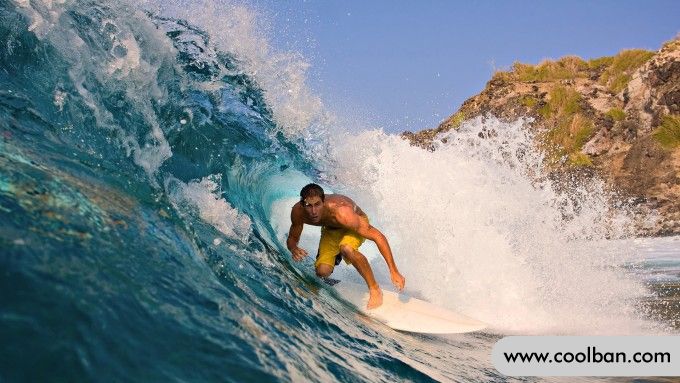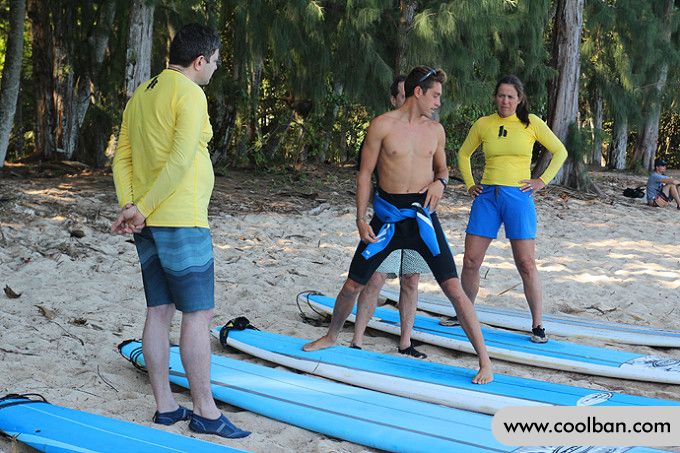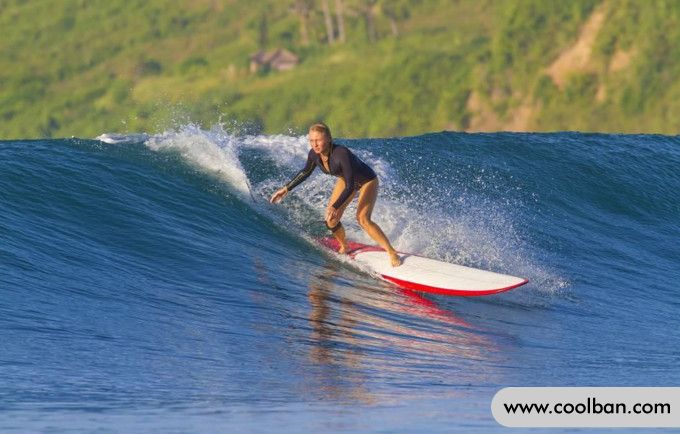How to prepare for learning to surf
When it comes to surfing, the dangers of surfing are infinitely magnified by those who do not understand. In their minds, surfing must be struggling in the sea of huge waves. It's not surprising to have such an idea, basically because you don't understand it.
In fact, the introduction to surfing is far less scary than one might imagine. In fact, surfing is an "extreme" sport that allows beginners to quickly experience fun under the guidance of a teacher. Many people refer to certain sports as "extreme sports" when they think of them, as long as they involve life-threatening situations. As a beginner, surfing a 1-meter wave is a sport, and surfing a 10-meter wave is an extreme sport. From 1m to 10m takes a lot of time and practice. If you want to stand up and rush into the 10-meter wave, this is called ignorance, not extreme sports.

So what should be done before learning to surf?
5 things to know before surfing
1. Choose the right surfboard and clothing
In general, the shorter the board, the harder it is to control. It is recommended that beginners choose a surfboard that is 1-3 feet larger than themselves. If you are 5'8, choose 7'8 plate. The bigger the board, the easier it is for you to stand firm. How long a surfboard should be depends on your own height, the taller you are, the longer the board should be.
After choosing the right surfboard comes the right surfing clothing. For clothing, check the local water temperature or ask local surfers what they are wearing.

2. Choose an experienced surf instructor
As a beginner, it is very necessary to hire a qualified instructor or an experienced surfer. A qualified teacher allows students to avoid injury and get to the point quickly. Students should learn in the first teaching: a series of actions such as paddling, crossing waves, catching waves, and taking off. With the help of teachers, most students can stand on the board in the first lesson and experience the fun of gliding on the water.
3. Pay attention to sea conditions
Remember, swimming indoors and swimming in the ocean are two completely different places. Indoor swimming is more about technique and physical fitness. In addition to these two basic rules, there is a crucial condition for swimming in the sea, which is "based on sea conditions" , the sea state directly affects the drowning rate of people in the sea. Remember not to rush, to stay safe, learn to surf in the right weather and avoid diving in potentially dangerous places like reefs and undercurrents.

4. Why you should wax your surfboard
The surface of a hard surfboard is smooth and frictionless, and we need to add friction to it—that is, sanding surf wax on the surfboard. Surfboard wax works the opposite of car wax. Slate creates rough and abrasive surface particles that allow us to stand firmly on it while in the water.
5. About physical fitness
Surfing consumes a lot of physical strength, and 95% of the time in the water is paddling, which is why many surfers have a good body. Since most of the time is stroked, it is very necessary to strengthen the training of the stroke muscle, namely the triceps. At the same time, strong triceps can solve the butterfly sleeves criticized by girls.

3 basic common sense not to be missed during beginner surfing
1. Beware of undercurrents
If you find yourself in rapids that are pulling people out, swim calmly on your side. Being good at swimming does not mean knowing the sea. If you don't have a flotation prop, don't go into the sea above waist height when you go to the beach. Even if you have a surfboard, if the waves are bigger than you normally would, go into the water with your partner and don't get too far from your partner. Please don't force yourself into the sea when you are not healthy.
2. Know how to catch waves
Position your surfboard vertically toward the beach. When the waves are just reaching you, take a quick paddle and jump on the board with the correct form. Glide in the direction of the waves, following the physics of the waves. On the basis of learning to stand firm, practice the basic movements of catching waves.
3. Know how to ride waves
For beginners, using a longboard to cross waves is difficult and consumes physical strength, so in the process of waterskiing in the wave area, if you encounter a wave head, the correct way is to tilt the head of the board and lift it. At the same time, you can paddle across the waves with both hands. Remember to follow the wave's fluctuations, and don't use brute force to fight (these surf lessons will be learned, so you must listen carefully).
The above are some basics and basics about surfing, one thing I can reiterate, anyone can learn to surf, and surfing is relatively safe to start with.
